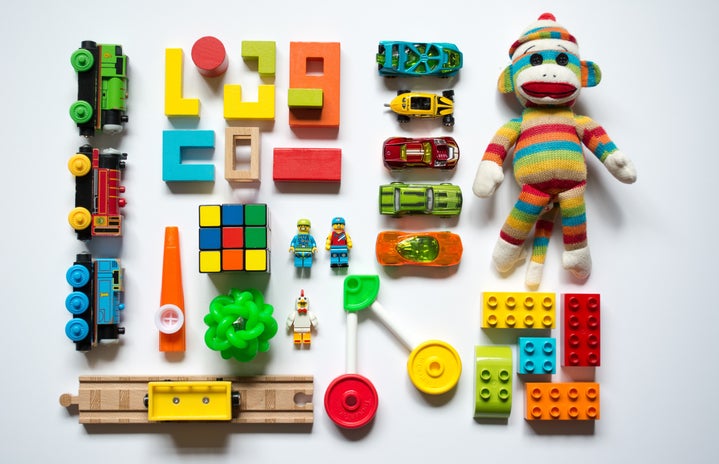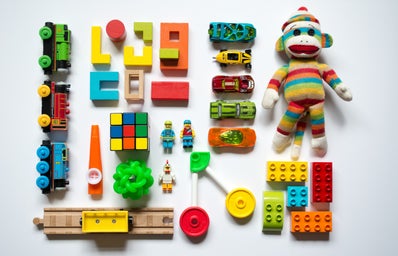I recently watched the Netflix documentary This Changes Everything, a film centered around gender discrimination in the entertainment industry. This documentary reveals shocking statistics on all kinds of disparities in female representation both in front of and behind the camera, but what stuck with me most was in the context of children’s TV shows and movies. Quoting the film, “In something like Finding Nemo, they’re all fish, but most of them are men.” This got me thinking about all the other seemingly benign narrative and character choices in children’s entertainment that say a lot about the biases held by the adults making this entertainment, the preferences of the audience it’s meant to entertain, and the stereotypes that are being passed down to the next generation.
In 2008, researchers from universities all around the world performed the world’s largest quantitative media analysis of children’s TV across 24 countries. Most of us who are students now were consuming lots of children’s media around 2008, so even though it seems like a long time ago, I still find it extremely relevant. Over 26,000 main characters were examined over thousands of hours of children’s TV, most of which were fictional cartoon programs. The overall result was that only 32% of human main characters were female, and 68% male. Of the non-human characters, only 25% of animals, 21% of monsters, and 16% of robots were presented as being female. In fact, the only notable female robot I can think of is EVE from WALL-E (which was coincidently released in 2008), who of course serves as the love interest of the male main character. As highlighted in this article, biological sex of these characters is entirely constructed, and “it seems that the greater the degree of creative freedom, the more the gender ratio is biased towards male characters.”
On a similar note, I have childhood memories of my brother and I playing with his Thomas the Tank Engine trainset, and how my mom found a few “female” trains for me to play with, in addition to all my brother’s “male” trains (i.e., the main characters of the franchise). As it turns out, in 2018, the franchise was updated to include some multicultural and female characters. But regardless, the question remains: throughout the various forms of entertainment that children are exposed to, are we perpetuating stereotypes about what sorts of character types or activities are “supposed” to be male or female, and how does this affect kids as they learn to find their place in the world?
The Geena Davis Institute on Gender in Media, which is referenced frequently in This Changes Everything, collaborated with the LEGO group in 2021 to assess how creativity might be gendered, both from the perspectives of parents and their children. The results revealed that certain toys and activities are still considered gendered. It was found that 74% of boys and 62% of girls agree with the statement: “Some activities are just meant for girls to do, while others are meant for boys to do.” Yet, 54% of parents worry that their sons will be made fun of if they play with toys associated with girls, and 26% for their daughters and toys associated with boys. They also found significant gender bias in what careers are instinctively associated with women and men, both in the parents and the kids. (You can check out the striking graphs on page 18-19 here.)
What’s the point of collecting all this data? It’s important to acknowledge the potential limitations that such stereotypes place on children’s ability to freely develop their interests. The role models they see on television and in the toys they play with can have a huge impact not just on their childhood development, but also on their future career choices.
So how do we make this better? The LEGO study provides some recommendations for intentional marketing of toys towards boys or girls through the colour choices and narratives in LEGO sets. For example, narratives of nurturing and caregiving (an animal hospital, for instance) in bright coloured LEGO sets as opposed to pink or purple sets puts historically female-associated traits in the context of all kids. This is similarly accomplished by writing narratives of heroism and expertise (like firefighting) into pink and purple sets. As for TV and films, the data generally show improvement over time, both in the male-female proportions and in the number of female characters in male-dominated careers on the screen. But even as the balance approaches 50-50 (52.0% female in 2018 to be exact), this is just the tip of the iceberg: there is an incredible lack of representation in terms of race, disability, and LGBTQ+ characters in film and television that is also being studied and must be addressed.
Children are impressionable, and we know that behaviours and biases are learnt. From the LEGO study, we see that somewhere along the line from childhood to adulthood, perceptions change. Children are more likely to possess an “I can do anything” attitude, while their parents think more along the lines of, “well, yes you could do anything, but maybe you shouldn’t if you don’t want to be judged.” While the documentary This Changes Everything certainly opened my eyes, there is more to be learned, and more to be done. If the future women of the workforce are ever to have an equal shot at the careers of their male counterparts, then today’s children are the place to start. Whether a train is “male” or “female” doesn’t change its ability to carry passengers or cargo, so if we’re to fix our messaging, let’s start there.
Information obtained from:
https://seejane.org/research-informs-empowers/lego-creativity-study/


